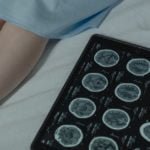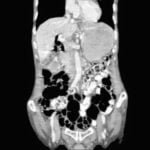
Types of Eating disorders
Student corner: Contributed by Ms Aaliya Masoodi Types of eating disorders Eating disorders are a group of related conditions involving extreme food and weight problems, but each disorder has unique signs and diagnosis criteria. Here are the first 3 of the most common eating disorders and their symptoms. 1. Anorexia nervosa: Anorexia nervosa is likely the most well-known eating disorder. It generally develops during adolescence or young adulthood and tends to affect more women than men. People with anorexia generally view themselves as overweight, even if they’re slim. They tend to constantly monitor their weight, avoid eating certain types of foods, and severely restrict their calorie intake. Common symptoms of anorexia nervosa include (1): Very limited eating patterns.Intense fear of gaining weight or persistent behaviors to avoid gaining weight, despite being underweight.A relentless pursuit of thinness and unwillingness to maintain a healthy weightA heavy impact of body weight or perceived body shape on self-esteemA misinterpreted body image, including denial of being seriously underweight . However, it’s important to note that weight should not be the major focus of diagnosing someone with anorexia. Using body mass index as a factor in diagnosis is outdated because people who are categorised as “normal” or “overweight” can have the same risks. In atypical anorexia, for example, a person may meet the criteria for anorexia but not be underweight despite significant weight loss. Obsessive-compulsive symptoms are also often present. For instance, many people with anorexia are preoccupied with constant thoughts about food, and some may obsessively collect recipes or hoard food. They may also have difficulty eating in public and exhibit a strong desire to control their environment, limiting their ability to be spontaneous. Anorexia is officially categorised into two subtypes — the restricting type and the binge eating and purging type (1). Individuals with the restricting type lose weight solely through dieting, fasting, or excessive exercise. Individuals with the binge eating and purging type may binge on large amounts of food or eat very little. In both cases, after they eat, they purge using activities such as vomiting, taking laxatives or diuretics, or exercising excessively. Anorexia can be very damaging to the body. Over time, people living with it may experience thinning of their bones, infertility, and brittle hair and nails. In severe cases, anorexia can result in heart, brain, or multi-organ failure and death. 2. Bulimia nervosa: Bulimia nervosa is another well-known eating disorder. Like anorexia, bulimia tends to develop during adolescence and early adulthood and appears to be less common among men than women. People with bulimia frequently eat unusually large amounts of food in a specific period. Each binge-eating episode usually continues until the person becomes painfully full. During a binge, the person usually feels that they cannot stop eating or control how much they are eating. Binges can happen with any type of food but most commonly occur with foods the individual would usually avoid. Individuals with bulimia then attempt to purge to compensate for the calories consumed and to relieve gut discomfort. Common purging behaviors include forced vomiting, fasting, laxatives, diuretics, enemas, and excessive exercise. Symptoms may appear very similar to those of the binge eating or purging subtypes of anorexia nervosa. However, individuals with bulimia usually maintain a relatively typical weight rather than losing a large amount of weight. Common symptoms of bulimia nervosa include: recurrent episodes of binge eating with a feeling of lack of controlrecurrent episodes of inappropriate purging behaviours to prevent weight gainself-esteem is overly influenced by body shape and weighta fear of gaining weight, despite having a typical weightSide effects of bulimia may include an inflamed and sore throat, swollen salivary glands, worn tooth enamel, tooth decay, acid reflux, irritation of the gut, severe dehydration, and hormonal disturbances. In severe cases, bulimia can also create an imbalance in levels of electrolytes, such as sodium, potassium, and calcium. This can cause a stroke or heart attack. 3. Binge eating disorder: Binge eating disorder is the most prevalent form of eating disorder and one of the most common chronic illnesses among adolescents. It typically begins during adolescence and early adulthood, although it can develop later on. Individuals with this disorder have symptoms similar to those of bulimia or the binge eating subtype of anorexia. For instance, they typically eat unusually large amounts of food in relatively short periods and feel a lack of control during binges. People with binge eating disorder do not restrict calories or use purging behaviours, such as vomiting or excessive exercise, to compensate for their binges (12 Trusted Source). Common symptoms of binge eating disorder include: eating large amounts of food rapidly, in secret, and until uncomfortably full, despite not feeling hungryfeeling a lack of control during episodes of binge eatingfeelings of distress, such as shame, disgust, or guilt, when thinking about the binge eating behaviourno use of purging behaviours, such as calorie restriction, vomiting, excessive exercise, or laxative or diuretic use, to compensate for the binge eatingPeople with binge eating disorders often consume an excessive amount of food and may not make nutritious food choices. This may increase their risk of medical complications such as heart disease, stroke, and type 2 diabetes. To be continued. References: 1. The clinic, Cleveland Clinic. “Eating Disorders”. https://my.clevelandclinic,org. Cleveland clinic. Retrieved 9 June 2022. Sweeting H, Walker L, MacLean A, Patterson C, Räisänen U, Hunt K (2015). 2. “Prevalence of eating disorders in males: a review of rates reported in academic research and UK mass media”. International Journal of Men’s Health. 14 (2). doi:10.3149/jmh.1402.86 (inactive 31 December 2022). PMC 4538851. PMID 26290657. 3.”Anorexia Nervosa: Symptoms, Causes, and Treatments”. Healthline. 2012-07-25. Retrieved 2020-12-09. |
Join the mailing list!
Get the latest articles delivered right to your inbox!




